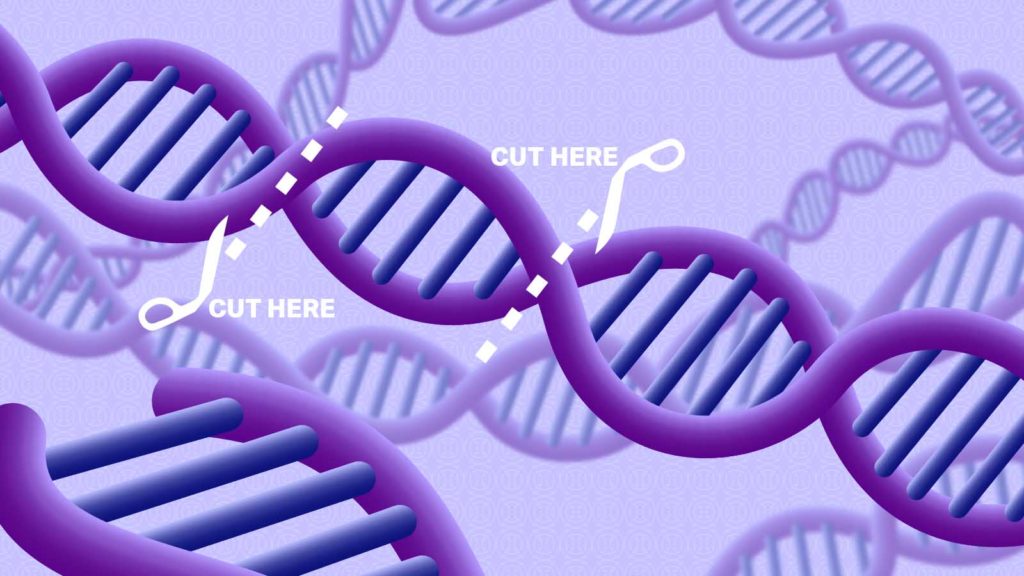
One of the most important innovations of the modern era is CRISPR gene editing, which people became familiar with starting in 2012. That was when Sam Sternberg and Jennifer Doudna informed the world about their CRISPR experiments in the pages of the journal Science.
They received a patent for their work, which is transforming the way scientists look at and approach changing genes (also known as genetic engineering).
CRISPR is facilitating innovations in diverse fields, from food science to medicine. Scientists have high hopes that gene editing via CRISPR can bring us into a future with less disease and higher quality fruits and vegetables.
How Do Scientists Edit Genes With CRISPR?
CRISPR gene editing (the acronym stands for “Clustered Regularly Interspaced Short Palindromic Repeats”) allows scientists to actually edit genes inside of a living human cell. By injecting specially prepared CRISPR RNA into the nucleus of a cell, you can cut out a sequence of DNA and substitute the sequence you prefer.
Potential Cure for Sickle Cell Disease
The New York Times weighed in on recent developments in CRISPR with a look toward the future. Currently, researchers are engaged in preliminary clinical trials for using CRISPR gene editing to treat patients with sickle cell disease. With no cure today, the ability to alter a patient’s DNA to avoid getting this disease would be a relief to so many people.
Force Tomatoes to Accumulate Vitamin D
In Norwich, England’s John Innes Centre, botanist Cathie Martin has been focusing her attention on tomatoes, per the New York Times. In her research, she and colleagues have been examining mutant tomatoes because it helps them to better understand how they function. Of major interest is how she might be able to cause food to last longer, and be more robust and healthy, starting with tomatoes.
With the advent of CRISPR, a colleague of Martin said he would create a mutated tomato for her, but she was dubious about the proposition. But in the end, she relented and asked for a tomato that cannot produce chlorogenic acid, as no such tomatoes with this lack of ability had ever been found in nature.
If he produced the mutant tomato for Martin, it would demonstrate the efficacy of CRISPR gene editing. With the success of the first tomato not being able to make chlorogenic acid, Martin’s lab team have now developed a tomato that is able to accumulate vitamin D under sunlight. A single gram of leaves from this mutated tomato has 60 times the adult RDA of vitamin D.
Rapidly Sequence New Diseases for Diagnosis and Therapy
The novel coronavirus that leads to COVID-19 infections worldwide took some medical professionals by surprise. We needed to quickly determine the genetic attributes of COVID to formulate a targeted response with vaccines.
And having a genetic fingerprint of the infectious agent causing COVID-19 samples helps public health professionals track the spread of the disease through populations as well as identify the prevalence of one new strain over another.
To that end, they harnessed CRISPR gene editing to quickly sequence the coronavirus, as reported by the New York Times.
What Will the Future Hold for CRISPR Gene Editing?
The innovations of CRISPR are still quite new, but research continues apace in a variety of experiments. From homing in on a clear-cut cure for the dreaded sickle cell disease to coming up with ways to improve crops to quickly determining the nature of a new emerging disease, CRISPR gene editing holds a great deal of potential and promise for the future.











